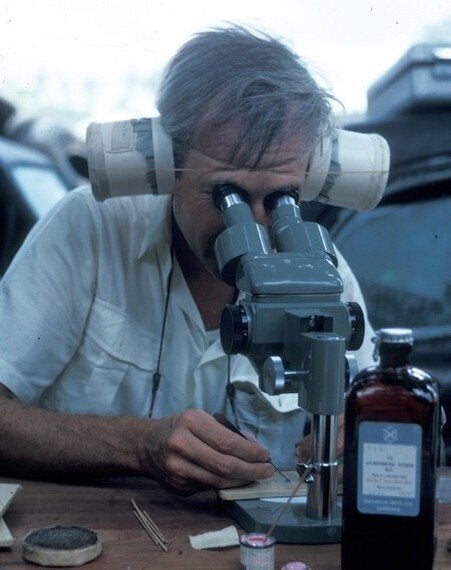I was sitting in a used car dump in Dar es Salaam waiting for mosquitoes to bite me. The dump was full of old tyres containing rainwater in which the mosquitoes were breeding. They were big mosquitoes, named Aedes aegypti, notorious for carrying dengue fever in Asia and South America, yellow fever and a very painful disease called chikungunya in Africa. Now it is even more infamous for spreading Zika virus, that appears to cause microcephaly, in South America.
It was 45 years ago, I had just finished my doctorate at the University of California at Davis and I was with a Professor McClelland from there, also an entomologist. We wanted to find out how frequently this mosquito feeds on human beings, since this is information is crucial to understanding how the various viruses are transmitted. We sat in the dump each morning waiting for the female mosquitoes to come and bite us. We captured them. First came the tough part. We placed them in small cages and put the cages on ourselves so that they could feed. We soon found that the best places were our ears and our knuckles, because the blood was near the surface. We let them feed until they were fully engorged.

Gordon Conway, Dar es Salaam, 1970

Professor Andy McClelland, Dar es Salaam, 1970
Then the delicate part. We gave them a mild anaesthetic, placed them under a binocular microscope and marked their backs with a distinctive pattern of dots using enamel paint and a very fine hair, so that we could identify each one. Finally, we released them into the dump. They did not seem to suffer from their ordeal, but we did.
We repeated this every morning for eleven days, all the time carefully watching to see if our marked mosquitoes had come back. 12% of them did which is a high return rate for a mark-release-recapture of this kind. Most important they came back every 4 days, although a few came back the next day. The yellow fever virus takes 10 days or more, depending on the temperature, to 'incubate' inside the mosquito from the day when it is taken up in the blood during feeding until it is re-injected when it feeds on another human being. Thus with four days between feeding it will transmit the virus to another human being at the 3rd or 4th feed after the first one (The Zika virus takes about 10 days).

Mosquitoes breeding in used car tyres, Dar es Salaam
With this information it becomes possible to assess various mosquito control strategies. The most effective method is one that reduces the average length of life of mosquitoes so that very few or none survive for 12 days. Insecticides such as DDT can do this when applied appropriately. I remember before I went to California I lived in northern Borneo. There, the inside walls of the houses where the malaria mosquitoes rested were sprayed twice a year with DDT. We had very little incidence of malaria. Use of DDT in Brazil eradicated Aedes aegypti by 1958. But subsequently it was found that DDT causes environmental harm. Today less harmful insecticides, including pyrethroids, are now available and are recommended by the WHO for fogging outdoors, providing precautions are taken.
The trick is to ensure that the mosquitoes do not survive to pass on the virus. If an insecticide kills 50% of a mosquito population each day, then by day 8 virtually none will still be alive. By day 12 they will all be dead. But of course, this is not a magic bullet. It has to be evaluated alongside other methods of control. Killing the mosquito larvae in the water where they live, for example in the used car tyres in Dar es Salaam, can be very effective, mosquito repellents can help and the large scale release of male mosquitoes genetically engineered to be sterile is being tried in Brazil with success.
